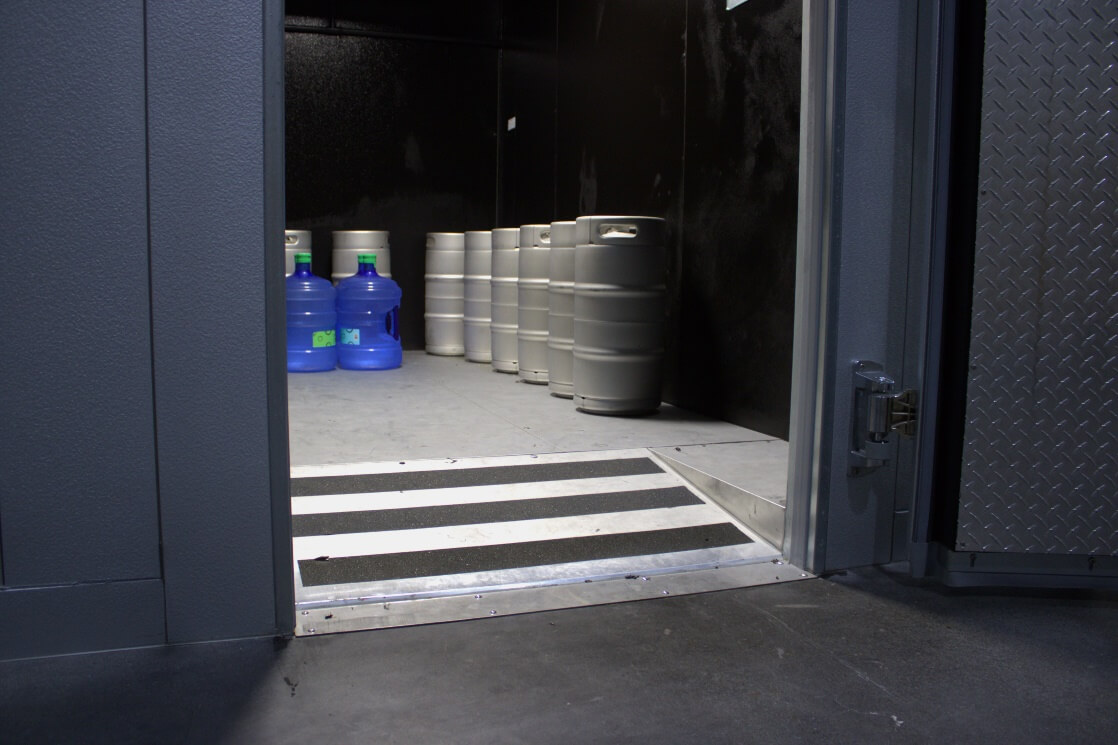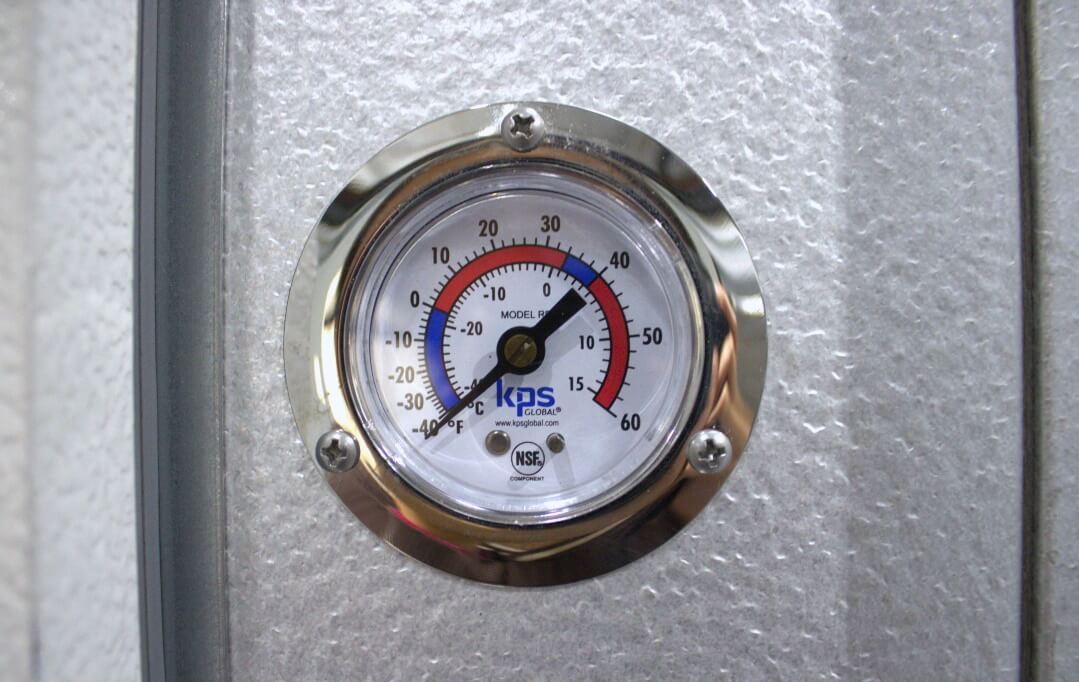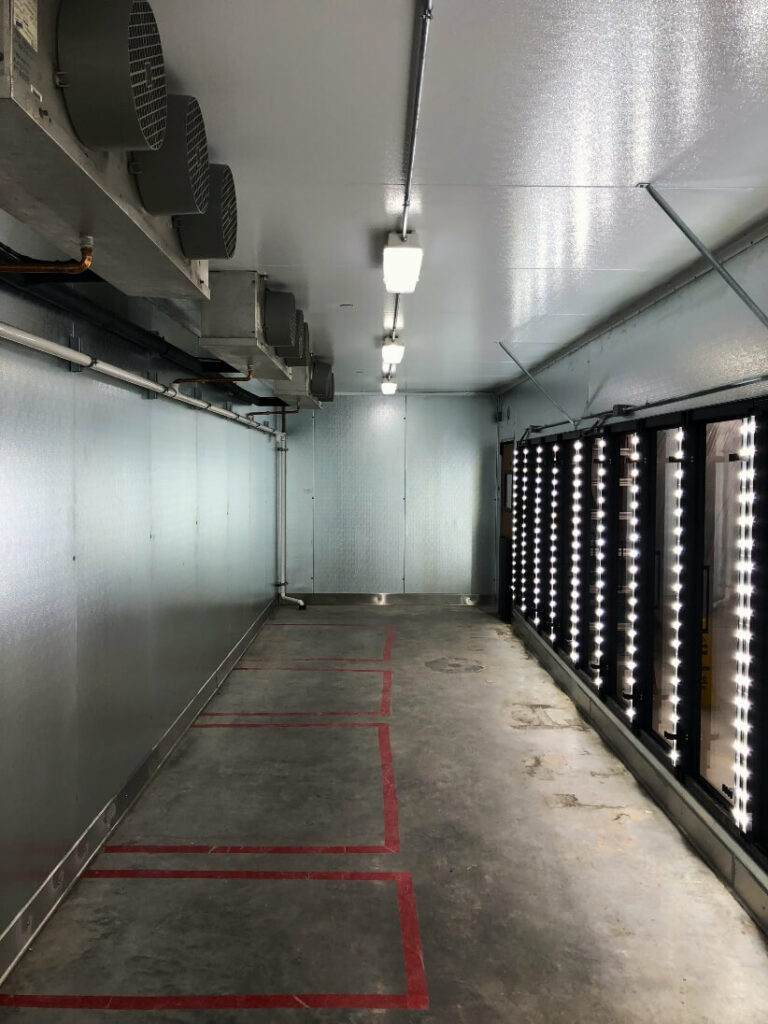
1. How frequently should I check the condition of the abrasive coated anti-skid strips on walk-in cooler or freezer ramps?
The conditions of the abrasive coated anti-skid strips on walk-in ramps should be inspected monthly.
2. What are the most effective cleaning methods for walk-in cooler and freezer surfaces?
In walk-ins, all walkway surfaces should be kept clean and free of spills and food particles. Maintaining cleanliness with a damp mop is recommended. Do not hose down insulated panels.
3. How often should I inspect the refrigeration equipment in a walk-in for correct operation?
Refrigeration equipment in walk-ins should be inspected frequently for proper functioning of evaporators, drain pan heaters, defrost controls, and drain line heaters by a refrigeration contractor. You can also refer to your user manual for more information about proper refrigeration equipment inspection. KPS Global also offers a wide range of equipment, as well as installation services, to help.
4. How can I prevent condensate water from reaching the walk-in floor?
Condensate water prevention is key to maintaining a safe and clean walk-in environment. As such, condensate water must never drip on the walk-in floor. For optimal floor protection, proper condensate drain lines should be installed on the walk-in evaporators.
5. What is the recommended cleaning procedure for metal surfaces, magnetic door gasketing, and door sweep gaskets in walk-in coolers and freezers?
Metal surfaces, magnetic door gaskets, and door sweeps in walk-ins should be cleaned frequently with a mild detergent and hot water. Following cleaning, ensure that you remove all soap film and dry the parts thoroughly with a clean cloth.
Cleaning specific parts of walk-in coolers, such as magnetic door gaskets, should be included in your walk-in coolers maintenance checklist.

6. What is the purpose of testing and calibrating the thermometer in a walk-in cooler and freezer?
Thermometer testing is done in walk-ins to ensure accurate temperature readings. If the readings are inaccurate, you can recalibrate by putting the thermometer probe into ice water and adjusting the pointer with a screwdriver to 32°F. To maintain effective walk-in coolers and freezers, it’s essential to maintain proper walk-in thermometer calibration.
7. Where can I find the connection points for the electrical components of the walk-in unit?
The electrical component connection points in walk-ins are located inside the unit. They can be found above the walk-in door at the hinge side in the light base or junction box. Please note that some cooler or freezer boxes may have electrical connections on the walls.
8. How should the lights and heater components of a walk-in be connected?
Your walk-in lights and heater components should be connected according to the provided KPS Global wiring diagrams.
9. How should the electrical connections be made for walk-in units with more than one door, light, or switch?
For walk-in units with multiple doors, lights, and switches, the electrical connections should be made according to the provided wiring diagrams from KPS Global.
10. If the anti-condensate heaters on glass doors stop working, what should I do?
If the glass door anti-condensate heaters are inoperable, you should refer to the troubleshooting anti-condensate heaters section of the manual for instructions on what to do next. To make sure you have the correct manual, reach out to the manufacturer. They will also be able to confirm the specs on the glass door brand.

11. What should I do if the walk-in freezer door heaters aren’t functioning as they should?
If the door heaters on your walk-in freezer are not functioning properly, refer to the troubleshooting section of the walk-in manual or reach out to KPS Global for assistance.
Looking for visual examples of walk-in cooler and freezer maintenance? Check out KPS Global’s resource videos.
If you have any questions or need tips for creating an effective maintenance checklist, click here to reach out to an expert.



